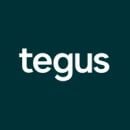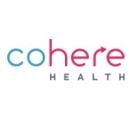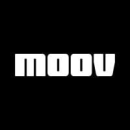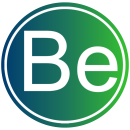Where would an orchestra be without its conductor — or a product launch without its product leaders?
While each individual instrument rests in the hands of an experienced musician, it requires a trained ear to know when the percussion falls off tempo, which section is out of tune and how to hit the final crescendo when showtime comes.
Product launches are no different. Like the rehearsal process for a live performance, product teams unite to deliver something impactful for their audience. They invest a serious amount of time troubleshooting issues until launch day — when everyone’s work comes together.
Tegus’ Director of Product Marketing Katie Rapp underlined the importance of carefully getting everyone on the same page.
“If you want everyone singing to the same sheet of music come launch day, meet them where they are,” said Rapp.
Built In spoke with Rapp and other product leaders with recent experience bringing their product to launch to get a glimpse behind the music — and the lessons they took away from launch.
Sittercity is a technology platform that connects families with caregivers for babysitting, nannying, tutoring services and more.
Tell us about your company’s most recent product launch. When did this launch occur, and what was the impact?
One of the most significant product launches in my tenure at Sittercity was our revamp of the applicant management experience, completed at the beginning of Q1. Sittercity is all about helping families find quality child care. Parents post jobs expressing needs, sitters apply and then parents review applicants to find a match. Through our feedback channels — like net promoter score comments and App Store reviews — we got tons of comments from parents saying how overwhelming the process of reviewing applicants was.
The impact of our enhanced applicant management has been felt across the company. On the business side, we’ve seen a boost in premium upgrades thanks to some new premium-only features. On the technical front, we completely replatformed the experience, making everything run more efficiently. However, the most significant impact has been on the customer experience. With this update, we addressed longstanding frustrations among users, alleviated the pain points associated with managing applicants and empowered parents with newfound efficiency.
What were some of the challenges your team faced — and overcame — throughout the product launch?
This launch was about putting our core product principle, “learn quickly, learn often,” into action. We were eager to get this initiative out to gather customer insights. It was a challenge not to let the scope spiral out of control when planning to rebuild a new feature. However, our product-engineering-design trio focused on keeping this initiative lean from a technical standpoint by prioritizing the most necessary functionality from a UX perspective. This ensured a rapid rollout to customers with the plan to iterate from there.
Once we launched, it was all about staying the course. At Sittercity, there’s certainly no backlog shortage, so it’s tempting to chase after new projects instead of honing in on the one at hand. But we’ve stuck to our guns and committed to iteration. Each update was broken into bite-sized tickets that weren't dependent on one another, ensuring smooth rollouts and continuous improvement with each iteration.
“It’s tempting to chase after new projects instead of honing in on the one at hand. But we stuck to our guns and committed to iteration.”
What are the biggest lessons you learned from this experience, and how will you apply these lessons to future launches?
One of the most impactful lessons I took away from this experience was the value of conducting post-launch user interviews while we were iterating. As soon as we rolled out the minimum viable product, I dove headfirst into conversations with our customers. The insights we gathered were invaluable; we got validation on areas we had planned to address and unearthed subtle pain points that had flown under our radar. For instance, we stumbled upon some copy changes that — while seemingly minor — were confusing users. This discovery underscored the importance of listening to and actively engaging with our users to uncover insights that could drive meaningful improvements.
Moving forward, we’re determined to add this practice of post-launch user interviews to our product development processes. Harnessing the full potential of user feedback will drive continuous improvement in all our future launches. After all, as we’ve learned firsthand, the key to building products that truly resonate with our users lies in understanding their needs, preferences and pain points on an ongoing basis.
Wonderlic helps HR teams identify top applicants using scientifically validated hiring assessments.
Tell us about your company’s most recent product launch. When did this launch occur, and what was the impact?
Our most recent large-scale product launch was in January of 2023. We’re primarily known as a pre-employment assessment company, which means we help businesses hire the best talent for their open positions. However, we’ve long been asked to help our clients clients to grow and develop their employees. In 2023, we launched Wonderlic Develop to meet this need. With this new product, we can provide employees with valuable insights into their strengths and weaknesses — as well as help them identify which attributes are most important to their role — so they can optimize their development efforts.
Wonderlic Develop is intended to be used by all employees across an organization, not just the leadership team or “high potential” employees. We firmly believe that providing access to this level of insight to everyone helps to even the playing field and will increase performance at all levels — not just at the top. Our customers have been thrilled to be able to offer this development opportunity to their employees because they know that investing in your talent is critical to keeping them.
What were some of the challenges your team faced — and overcame — throughout the product launch?
Building Wonderlic Develop was a multi-year investment. One of the first and largest challenges we identified was determining how to translate our science into meaningful insights that anyone can understand without needing an organizational psychology degree.
This took many rounds of experimentation and testing. Our assessments deliver rich information about an employee’s potential for success in their role, and we needed to present that information in a way that made it actionable. All too often with development activities, people take a test, get their results, read them once and place them in a drawer never to be seen again.
We wanted to ensure that our results would be something that people would return to again and again — because development is a process, not a one-time event. That’s why we built features like the Action Planner, to help employees identify the behaviors they need to start practicing and track their progress as they make those changes in their day-to-day activities. It was critical to get feedback from as many people as possible, across all levels of the org chart, to ensure that our product would deliver meaningful, actionable and repeatable value.
“We wanted to ensure that our results would be something that people would return to again and again — because development is a process.”
What are the biggest lessons you learned from this experience, and how will you apply these lessons to future launches?
User research is key. And this goes beyond just asking users what they think. You need to study how they behave as well. Talking to users is important, and asking them questions can provide valuable insights. But you also need to remember that users are people, and people can sometimes be unreliable predictors of their own actions.
When you ask someone if a new feature would be valuable, they might say “yes,” but that doesn’t mean they’d actually use that feature or that there isn’t a better solution to their problem.
The best thing you can do is experiment and iterate, ideally with prototypes that people can see, touch and use. That’s how you’ll gather the best insight into what people will actually do with your product, not just what they tell you they’ll do.
Tegus is a market intelligence company that provides clients with insights to help them make better investment decisions.
Tell us about your company’s most recent product launch. When did this launch occur, and what was the impact?
In January of this year, we launched one of the largest initiatives in Tegus’ history — an all-in-one research platform for fundamental investors. The launch included integrating our three product lines into a single technology platform with dozens of new feature enhancements, introducing a new pricing and packaging strategy, migrating customers to the new platform experience, launching a new marketing campaign and enabling internal teams on the new go-to-market motion and strategy.
This launch touched every facet of the business. While Tegus has always been customer-obsessed, this shift to an all-in-one platform enabled us to deliver outsized value to our customers and move closer to executing our vision of becoming the single destination for fundamental research. Since the launch, we’ve received overwhelmingly positive feedback from customers. We’ve seen a large increase in investors interested in switching to Tegus and a higher retention rate from existing customers.
What were some of the challenges your team faced — and overcame — throughout the product launch?
Early on, we encountered a challenge in developing a new pricing and packaging strategy that considered the unique pricing models for our existing product lines while also considering the various customer types we serve and our desire to provide a high-value solution at a good value. Ultimately, the answer came from our customers — as it always does. Through various research methods, we learned what delivered the most value to investors, identified our differentiated opportunity and saw where competing solutions were nickel-and-diming them.
Another challenge was enabling our market-facing teams on the new platform experience while continuing to build it in parallel. We had to get creative as we inched closer to launch. The design team shared early Figma designs, so the product team could socialize the vision. The product management team accelerated the creation of an in-product prototype, so product marketers could create demo materials and platform positioning. And engineering sprinted to get all employees access to the new platform before the launch date. The secret to building the plane while flying it was everyone owning their deliverables, being flexible and working as a team.
“The secret to building the plane while flying it was everyone owning their deliverables, being flexible and working as a team.”
What are the biggest lessons you learned from this experience, and how will you apply these lessons to future launches?
It truly takes a village. For large launches like this, it’s paramount to have a cross-functional project team that is collectively responsible for driving the successful execution of the launch plan. Each team member should represent their department's needs and outputs and be responsible for raising risks or blockers throughout launch readiness and execution. It’s impossible to predict every speed bump along the way, but having a tiger team who’s ready to respond will give you the best shot at keeping your launch timeline and deliverables on track.
The second lesson I learned was that you need to bring people along and meet them where they are. It’s easy to apply a one-size-fits-all mentality to launch communications and enablement, but that’s often not the case. For a launch of this size, every team in the organization needs to be brought along and the resources they need will vary whether they’re on the sales team or the talent acquisition team.
Cohere Health offers intelligent prior authorization and clinical intelligence solutions to streamline healthcare for patients, physicians and other providers.
Tell us about your company’s most recent product launch. When did this launch occur, and what was the impact?
In utilization management, an important step is for trained clinicians to review patient cases to ensure that the requested procedures are not detrimental or wasteful for the patient. While Cohere Health automates these approvals as often as possible, when our technology can’t determine that the request should be approved, the case will be sent to a nurse for review. This review has historically been cumbersome for nurses and requires scrolling through many pages — we’ve seen cases with over 100 pages — of clinical documentation to find the right evidence to approve the case.
Searching through unstructured text and surfacing the appropriate findings is a perfect use case for machine learning and AI, and our team has reimagined the entire nurse review experience to extract the key clinical data that nurses are looking for into an easy-to-read format right at their fingertips. This allows our nurses to operate at the top of their licenses by spending their time using clinical expertise instead of scrolling through reams of documents. While we launched the original version of this feature early in 2023, like any good product team, we have been focused on measuring, learning and iterating.
What were some of the challenges your team faced — and overcame — throughout the product launch?
This effort involved a multitude of individuals from various teams to deliver: product managers, designers, engineers, machine learning experts, data scientists, user researchers and Cohere's own nursing team. And it can certainly be challenging to keep the entire team aligned and rowing in the same direction. One way we addressed this challenge is by ensuring that everyone has a deep understanding of the end users we are building for — in this example, it was our nurses.
The product initiative was heavily informed by foundational user research that continuously orients the team to how nurses think as they perform reviews and what challenges they encounter. Additionally, we have found that it is vital for the team to stay laser-focused on the outcomes we are looking to deliver and how we will measure them. Aligning on what success looks like is crucial to ensure everyone stays focused on what we are learning from certain experiments or iterations, which new features are worth investing in building out more broadly and which ones should be dialed back. There will always be tradeoffs to make, and having this alignment on what success looks like at the outset is essential.
“We have found that it is vital for the team to stay laser-focused on the outcomes we are looking to deliver and how we will measure them.”
What are the biggest lessons you learned from this experience, and how will you apply these lessons to future launches?
With anything related to AI or ML, it is important to always keep in mind how the person using your product will feel about the technology. Will they immediately be trusting of the suggestions you give them, or will they be more skeptical? If they are more skeptical, what sort of transparency do you have to build into your product to help build that trust? It may be cool and flashy to embed ML and AI into your product, but if it's not solving a real problem for your end user and they choose not to use it, then it's not delivering any value to them or your company.
Moov provides a single API payment platform that allows businesses to accept, store, send and spend money in one place.
Tell us about your company’s most recent product launch. When did this launch occur, and what was the impact?
Recently, we introduced a new feature that enables lenders to accept debt repayments via debit cards. This includes the ability to participate in incentive programs offered by card brands that cap fees on debt repayment — which can help lenders protect their margins without passing fees on to their customers.
Because Automated Clearing House transactions have traditionally been the primary — and often the only — payment method for recurring bills or loan payments, this feature opens up options and opportunities for our customers. Card payments have quicker settlement times than ACH, as well as real-time fund verification and compatibility with technologies like Apple Pay that enable fast, seamless transactions.
At Moov, we’re focused on simplifying and accelerating payments by offering a single point of integration for all the major payment rails and enabling our users to accept, store, send and spend money from a single platform. Card-based debt repayment fits perfectly with our focus on enabling our customers to choose the best possible payment options for their use cases. The response has been extremely positive so far, and we’re looking forward to seeing continued adoption of this feature.
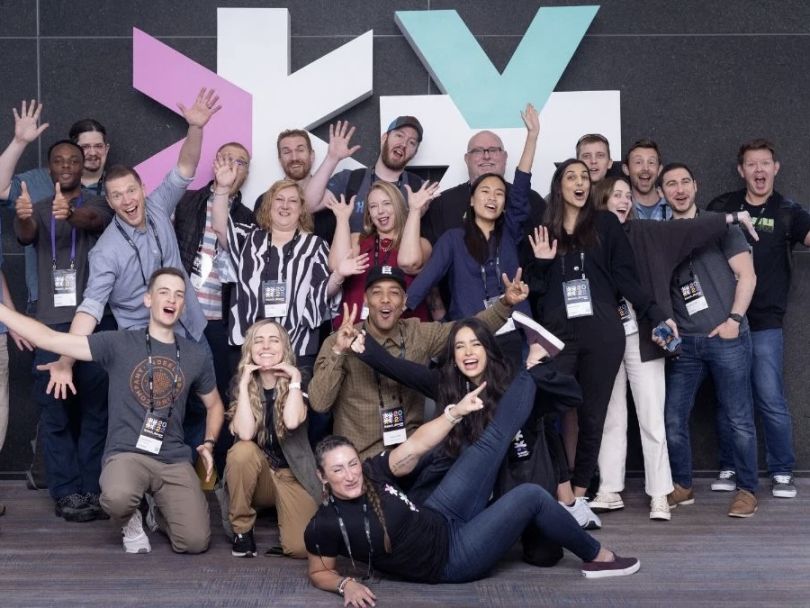
What were some of the challenges your team faced — and overcame — throughout the product launch?
When joining a new company or team, you often find yourself inheriting product requirements crafted long before your arrival. It can be challenging to drive progress while still acclimating to a company's product landscape, processes and the details of a given project.
If you’ve ever watched a skier or snowboarder approach a jump, you’ll notice that they check their speed to maintain control throughout their flight and landing. If they’re going too fast, they risk disrupting a carefully honed and controlled rhythm — potentially causing them to lose the competition or be injured.
In this particular case, we didn’t check our speed before the first jump. We assumed that the previously defined requirements and design were adequate to move forward. As a result, our first iteration didn’t align with what we ultimately wanted to launch. Luckily, Moov is the kind of place that extends trust and respects our craft as product leaders. So there was no blame or negativity — just learning and opportunity.
“Luckily, Moov is the kind of place that extends trust and respects our craft as product leaders. So there was no blame or negativity — just learning and opportunity.”
We drafted new requirements that reshaped our intended user experience. This aligned more closely with our integration partners’ specifications and our stakeholders’ expectations.
What are the biggest lessons you learned from this experience, and how will you apply these lessons to future launches?
Product managers need to become and remain experts in ever-changing domains and lead our teams with conviction. But there’s also a sense of urgency to keep moving forward. So you have to balance the growth of your expertise with the need to keep the pace set by your team and the industry.
One of my biggest lessons was to question everything. Challenge assumptions until you’ve developed a true understanding of the challenge you’re working on. Without deep understanding, it’s difficult to have convictions or a point of view to act on. When in doubt, check your speed. If you need to slow down, communicate the reasons to your stakeholders. The old adage applies: “haste makes waste.” Share product requirements, mockups and concerns with your team and stakeholders early and often. They can help stress-test your assumptions.
But the most important thing I’ve learned is that when you miss the mark or have to pivot, don’t view it as a failure. Instead, see it as one step towards a deeper understanding of your domain — and a better product in the long run. Payments are extremely complex, so the willingness to learn and adapt is crucial. I’m lucky to have found that at Moov.
Bectran provides finance departments with a companion toolkit of software to help cut costs and reduce risk.
Tell us about your company’s most recent product launch. When did this launch occur, and what was the impact?
In March of 2024, we launched dynamic waterfall models with time-based pre-conditions for B2B credit request approval automation. This feature empowers customers to mimic human behavior for credit request approval by allowing them to set pre-conditions for risk analysis, document gathering and thresholds. A customer can set multiple models that pull different credit bureau reports, like Experian, Equifax, Transunion or others, with differing risk thresholds and document requirements. For example, one model would require a Secretary of State check, while one model would require a Drivers License Validation check. This allows customers to achieve higher automation for credit approval for low-value, high-volume transactions — i.e. over 50 percent — and frees up end users to focus on higher value, strategic customer accounts and credit request approvals.
What were some of the challenges your team faced — and overcame — throughout the product launch?
One challenge was identifying scenarios and use cases. The open-ended nature of this product enhancement meant that the end user could configure any number of models — such as any number of credit bureaus, fraud checks and document requirements — to achieve their use cases, which causes an issue for identifying and addressing all possible edge cases for documentation and testing.
Another challenge was the complexity of testing. Because of the above point, testing this feature required more of a hands-on approach rather than an automated testing approach, to ensure we are accounting for a majority of the ways that customers may configure multiple models in production.
What are the biggest lessons you learned from this experience, and how will you apply these lessons to future launches?
The biggest lesson we learned was to plan for the unexpected by giving ourselves enough time to respond before our users experienced technical issues. We planned the deployment for Friday evening after our customers had left for the day. We reminded our user group to test the product over the weekend and report any issues while our team closely monitored and tested the system's performance throughout the weekend. By Monday morning, our customers could effortlessly proceed with their business operations unaffected by any user experience issues and begin utilizing the newly launched features that greatly improve their efficiency.
“The biggest lesson we learned was to plan for the unexpected by giving ourselves enough time to respond before our users experienced technical issues.”
For any professional, starting Monday with no system slowdowns and being able to complete all tasks efficiently sets the stage for the rest of the week. This lesson highlights the necessity for a user-centric approach in both the development and deployment stages. I believe our meticulous preparation paid off, guaranteeing a seamless experience for our users.








